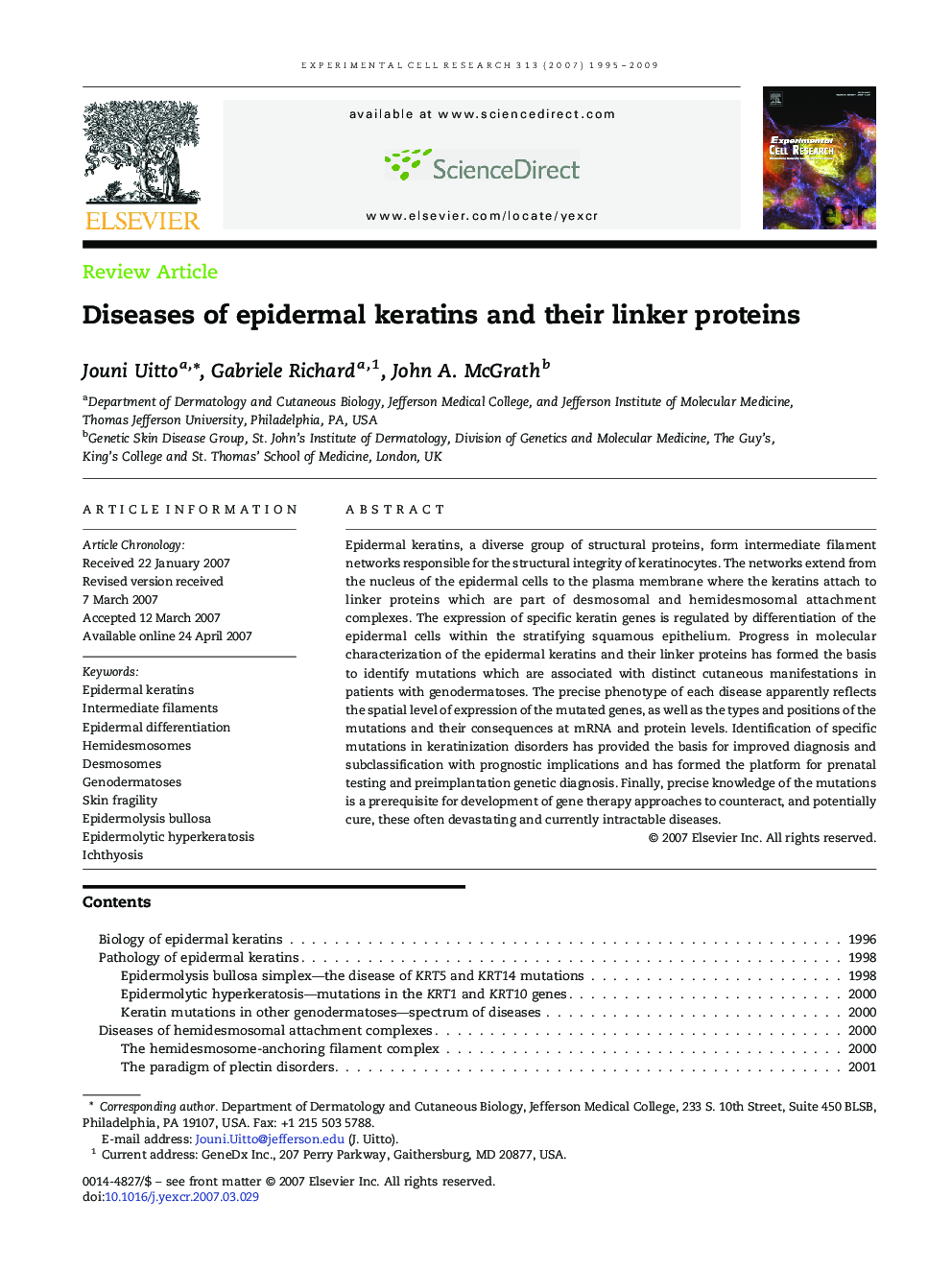| Article ID | Journal | Published Year | Pages | File Type |
|---|---|---|---|---|
| 2133062 | Experimental Cell Research | 2009 | 15 Pages |
Epidermal keratins, a diverse group of structural proteins, form intermediate filament networks responsible for the structural integrity of keratinocytes. The networks extend from the nucleus of the epidermal cells to the plasma membrane where the keratins attach to linker proteins which are part of desmosomal and hemidesmosomal attachment complexes. The expression of specific keratin genes is regulated by differentiation of the epidermal cells within the stratifying squamous epithelium. Progress in molecular characterization of the epidermal keratins and their linker proteins has formed the basis to identify mutations which are associated with distinct cutaneous manifestations in patients with genodermatoses. The precise phenotype of each disease apparently reflects the spatial level of expression of the mutated genes, as well as the types and positions of the mutations and their consequences at mRNA and protein levels. Identification of specific mutations in keratinization disorders has provided the basis for improved diagnosis and subclassification with prognostic implications and has formed the platform for prenatal testing and preimplantation genetic diagnosis. Finally, precise knowledge of the mutations is a prerequisite for development of gene therapy approaches to counteract, and potentially cure, these often devastating and currently intractable diseases.
